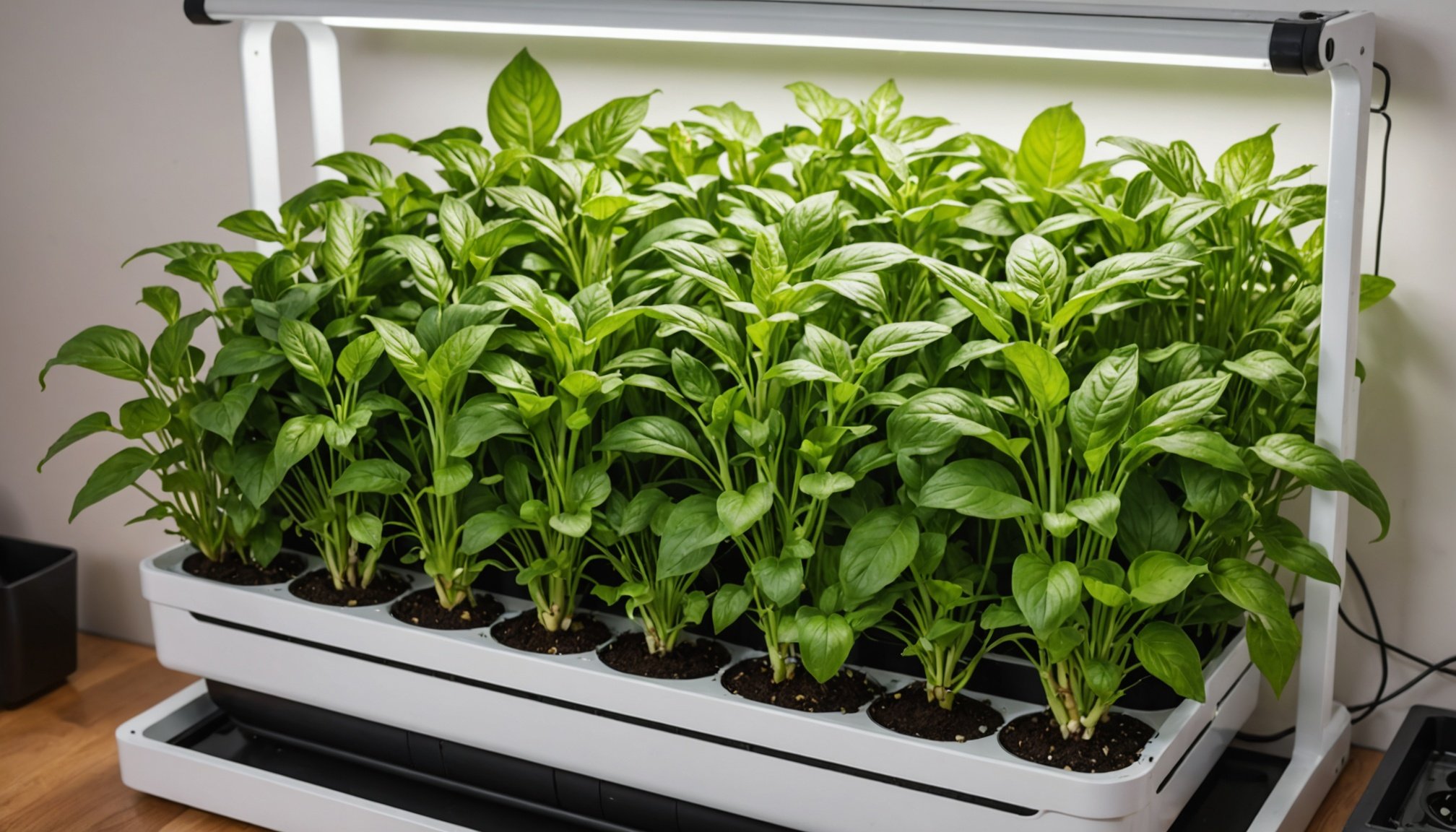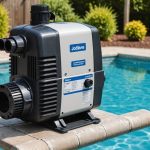Understanding Hydroponics for Small Spaces
Hydroponics presents a modern and efficient approach to gardening, ideal for urban dwellers. By focusing on water-based growth, hydroponic systems allow plants to thrive without soil, making it perfect for small space gardening. This method offers numerous benefits, particularly in densely populated areas where outdoor space is limited.
One of the significant advantages of hydroponics is its ability to maximize space use, as plants can be grown vertically, stacked, or even hung, significantly reducing footprint compared to traditional gardening. This is especially beneficial for urban environments where compact living is common. Moreover, hydroponics reduces water usage, making it an eco-friendly choice.
Also read : Unlocking the benefits of composting toilets: a comprehensive guide for uk off-grid homeowners
Unlike traditional gardening, where soil health and composition are critical, hydroponics involves growing plants in nutrient-rich solutions. This ensures precise control over nutrient delivery, resulting in faster growth cycles and increased productivity. Additionally, pest management becomes more effective, with fewer issues related to soil-borne pests.
Overall, hydroponics offers a streamlined and efficient gardening method, especially suited for those with limited space. With its sustainability and space optimisation benefits, it’s an attractive option for urban gardeners seeking to cultivate nutritious produce within confined areas.
Also to discover : Enhance your home”s energy efficiency: ultimate diy window insulation strategies for homeowners in the uk
Essential Hydroponic Systems for Limited Spaces
For those considering compact hydroponic setups in small flats, several systems provide excellent solutions. The nutrient film technique (NFT) stands out due to its space efficiency and suitability for growing a variety of smaller plants. This system involves a thin film of nutrient-rich water flowing past the bare roots of plants, delivering essential nutrients with remarkable precision.
Alternatively, a deep water culture (DWC) system is ideal for beginners, offering ease of setup and maintenance. It involves suspending plant roots in nutrient solutions, promoting robust growth without requiring extensive space. Considered one of the best systems for small spaces, its simplicity doesn’t compromise productivity.
For those with flat constraints yet seeking efficient output, vertical hydroponic systems are promising. These setups allow for vertical gardening, maximising vertical space and enhancing light exposure. While more complex, their yield potential is worth the investment.
When comparing hydroponic systems, consider each system’s size, efficiency, and alignment with personal urban gardening goals. Begin with smaller, manageable systems like DWC and gradually incorporate more sophisticated designs as expertise grows.
Optimal Plant Selection for Hydroponics
Selecting the best plants for hydroponics is essential for maximizing yield, especially in limited spaces. Certain high-yield hydroponic plants excel in compact environments due to their adaptable nature and growth requirements.
Leafy greens, such as lettuce, spinach, and kale, are top choices as they require minimal space and grow rapidly, ensuring a continuous harvest. Herbs like basil, mint, and cilantro are also excellent, thriving in small space gardening and offering the bonus of fragrance and flavour.
Characteristics of plants suited for small spaces include short root systems and a tolerance for close planting. These plant types for small spaces allow for maximized use of available resources, promoting efficient growth within compact hydroponic setups.
To enhance productivity, consider staggering plant cycles. This method involves planting seeds at different intervals, ensuring that plants mature progressively. Furthermore, selecting plants with similar light and nutrient requirements can simplify maintenance and care. By carefully selecting high-yield hydroponic plants, you can create a robust garden that flourishes even in the most confined areas.
Pest Management in Hydroponic Systems
Striking the right balance in pest control is crucial for successful hydroponic gardening. Identifying common pests like aphids, spider mites, and whiteflies can be a game-changer. These nuisances often find their way into confined gardens, jeopardising plant health. The precise identification of these pests allows targeted interventions, thereby enhancing the efficacy of control measures.
Natural pest control methods prove advantageous, especially within indoor settings where chemical options risk contaminating living areas. Consider using neem oil, insecticidal soap, or introducing natural predators like ladybugs to manage infestations sustainably. These natural solutions offer effective protection without introducing harmful substances to your home environment.
Preventative strategies play a significant role in minimising pest issues. Ensure regular system checks to catch early signs of pest activity. Maintaining a clean and well-aerated environment can deter pests, as many thrive in damp, stagnant conditions. Additionally, secure entrances and use pest barriers to limit their access to your garden.
With controlled environments like hydroponic systems, pest management becomes more feasible. While pest problems may arise, staying informed and proactive equips gardeners to handle them efficiently. Keep a consistent routine and employ sustainable practices to keep your mini-garden flourishing.
Equipment and Supplies for Successful Hydroponic Gardening
Getting started with hydroponic gardening requires some essential supplies. When considering hydroponic equipment, it’s important to focus on what beginners need most. Start with a hydroponic kit that includes basic materials like nutrient solutions, growing mediums, and a suitable water pump.
Affordable and space-saving tools are key for small areas. Tools like pH meters, which help maintain the right acidity levels of the nutrient solution, and compact LED lights ensure plants receive adequate light without taking up too much space.
Consider sustainable options such as recycled containers for plant holders, promoting eco-friendly gardening practices. As you gain experience, upgrading to more advanced tools like automation systems for light and nutrient distribution can enhance efficiency.
For those venturing into urban gardening, connecting with local groups can be invaluable. Sharing resources and equipment not only saves money but also fosters a sense of community.
Selecting the right equipment not only supports successful hydroponic gardening but also optimises small space utilisation, ensuring a thriving urban garden. Whether for beginners or experienced gardeners, focussing on versatile supplies makes managing a hydroponic system both efficient and sustainable.
Local Regulations and Guidelines for Urban Gardening
Engaging in urban gardening, particularly hydroponics, requires an awareness of gardening regulations. In the UK, urban gardeners often navigate a web of local laws to ensure compliance. Familiarising yourself with urban gardening laws is key, as these inform what is permissible within flats and communal areas.
To kickstart your hydroponic journey, begin by reviewing building codes related to hydroponics in flats. Many laws dictate aspects such as water management and electrical use, crucial for safe and legal system operation. Reach out to your building management or local council for specific guidelines applicable to your residence.
For aspiring gardeners, local community resources offer valuable support, from educational workshops to shared equipment facilities. These can help you navigate regulations and enhance your gardening practice. Additionally, connecting with urban gardening networks may provide insights into strategic compliance and innovative practices.
Ensuring compliance not only fosters goodwill among neighbours but also safeguards personal and communal property. Always double-check for any updates in legislation and maintain open communication with fellow residents. This proactive approach can prevent legal troubles while promoting a greener urban living environment.
Maximizing Growth in Limited Space
Optimizing space use is pivotal in urban gardening, especially for those engaging in hydroponics. Through vertical gardening, elevate your plants by using unconventional directions. This can be done using vertical planters or stacked installations, efficiently working with height, which makes it ideal for small flats.
Arranging plants wisely is key. Maximise light exposure by situating light-loving plants at higher levels, while shade-tolerant species fit well below. Using reflective surfaces can enhance available light, boosting plant growth without needing additional space.
Implementing shelves and wall-mounted systems is another effective strategy. They let you transform blank wall space into productive gardening areas. Choose modular units that fit your specific spatial dynamics and planting needs. This approach not only increases growing capacity but enhances aesthetic appeal.
Urban gardening techniques utilizing compact solutions provide a way to decorate your flat while cultivating a sustainable garden. By understanding the principles of space optimisation and applying them effectively, even the most confined living quarters can become fertile grounds for a thriving array of plants.
Step-by-Step Hydroponic Gardening Guide
For those new to hydroponics, setting up a compact garden may seem daunting. Yet, with a beginner hydroponic guide, the process can be straightforward. Start by selecting the right hydroponic system that fits your space, whether it’s the nutrient film technique or deep water culture. These systems vary in complexity but offer flexibility for small space gardening.
Begin with basic essentials: nutrient solution, water reservoir, growing lights, and a pH meter. Assemble your setup following instructions carefully, ensuring each component is correctly positioned. Once established, regularly monitor plant health keeping an eye on root growth and nutrient levels.
Routine maintenance is crucial. Regularly check for signs of nutrient deficiency, and adjust pH levels to maintain optimal conditions. Keep the system clean to prevent algae buildup. If issues arise, such as slow growth or leaf discoloration, consider troubleshooting tips like adjusting light placement or checking for clogs in nutrient tubes.
By meticulously following this step-by-step guide, cultivating a thriving hydroponic garden in a confined space becomes an achievable task. Consistent care and observation will lead to a bountiful, flourishing garden, even in the smallest of areas.
Success Stories and Examples of Hydroponic Gardens
Hydroponics offers a wealth of inspiring case studies, exemplifying how urban dwellers transform tiny flats into thriving mini-gardens. Take Anna from Bristol, who turned her small balcony into a lush oasis using a simple hydroponic system. Her journey began with a deep water culture system, allowing her to cultivate high-yield plants like lettuce and herbs without soil. “Hydroponics,” she states, “has empowered me to grow more, despite space limitations.”
In another instance, Martin from London made significant strides with vertical hydroponics. This approach helped him utilise limited wall space, cultivating fragrant basil and other leafy greens. By implementing smart space optimization techniques, his garden flourishes year-round, even in the city’s dreary winters.
These stories reflect the versatility and success of hydroponics in urban environments. Each gardener cites vertical gardening and careful selection of plant types as key factors in their success. Remarkably, they also underline the simplicity and effectiveness of hydroponics in achieving substantial yields in compact living quarters. Their experiences offer valuable insights and best practices for anyone eager to embark on a hydroponic venture, proving that with creativity and the right approach, even small spaces can host bountiful gardens.





